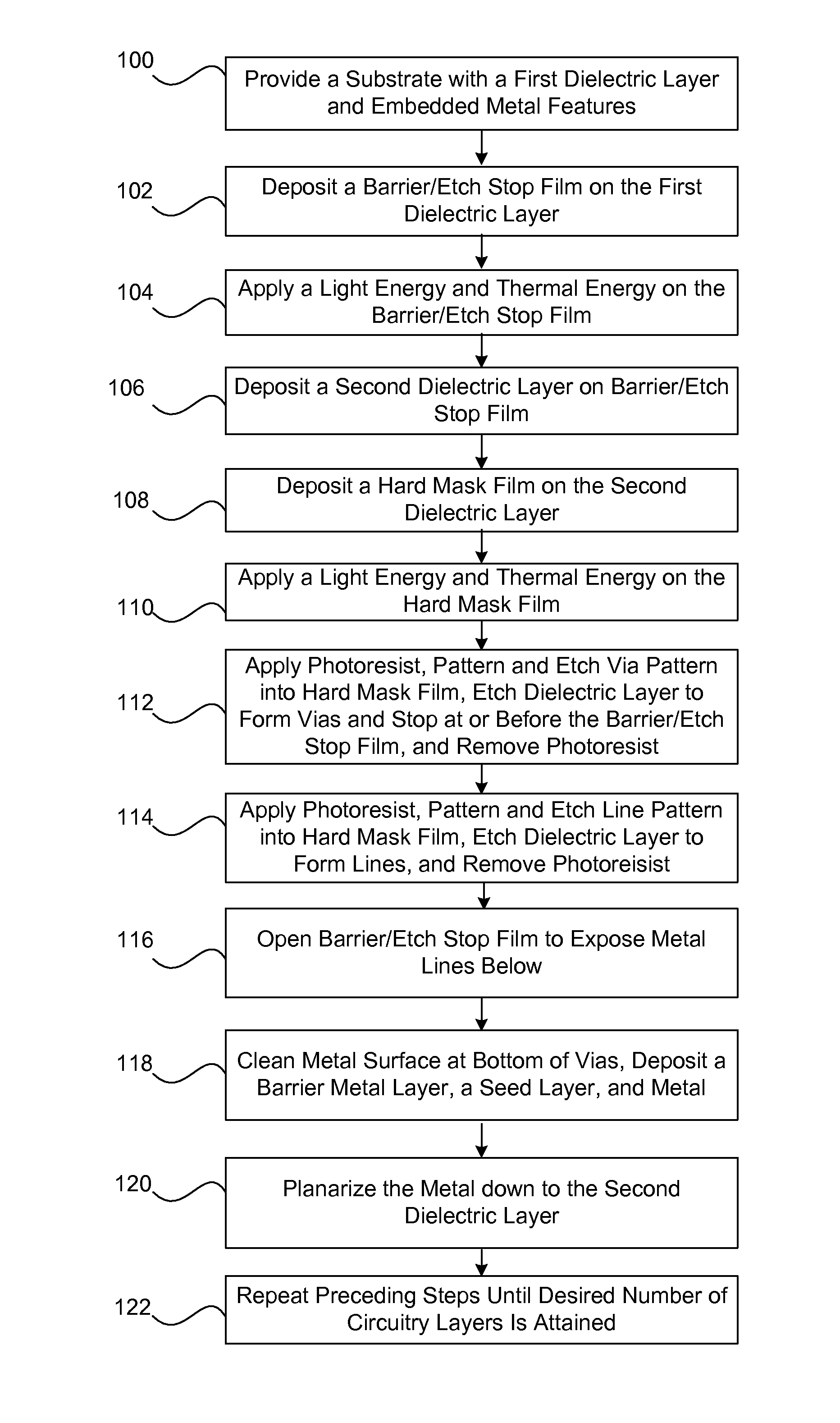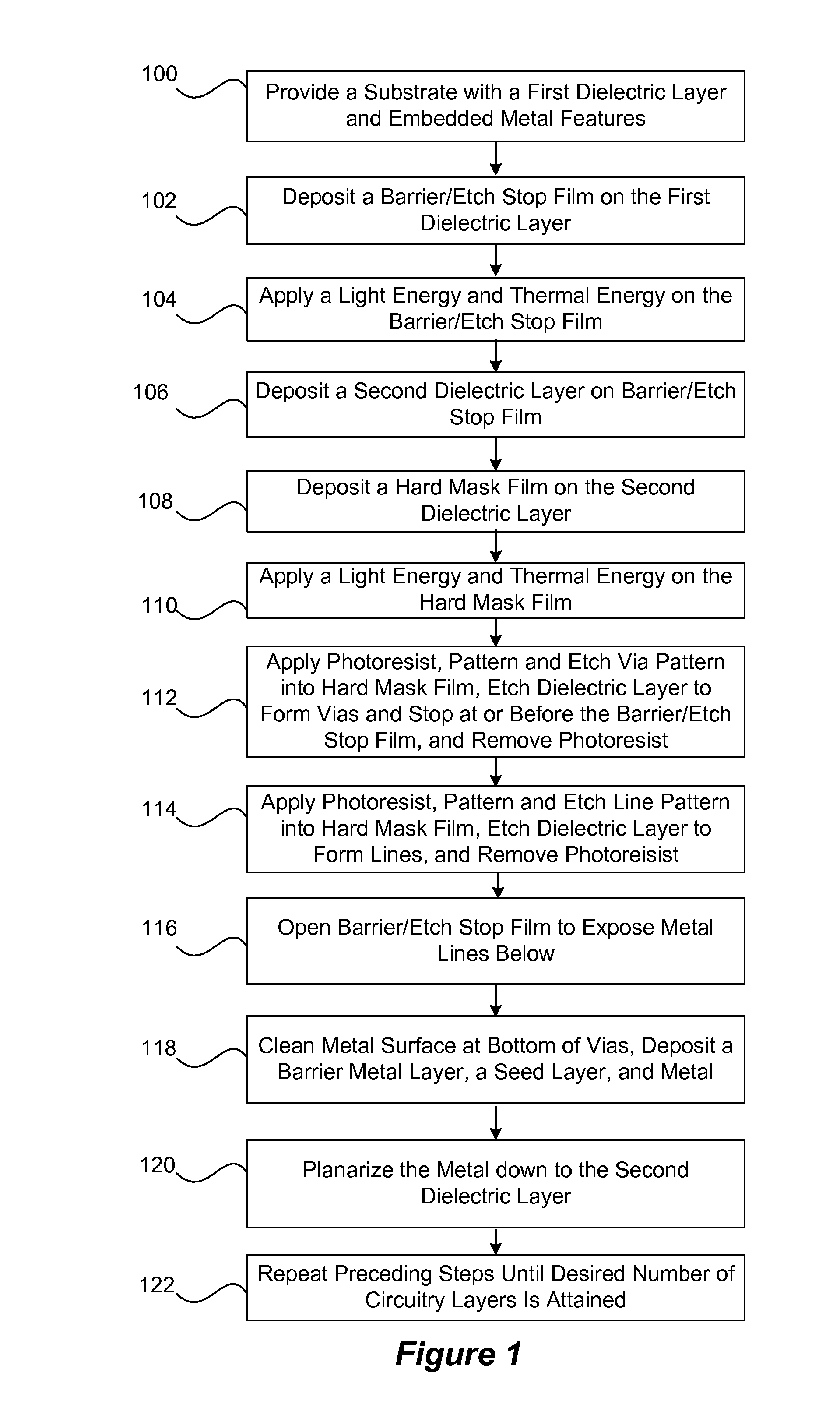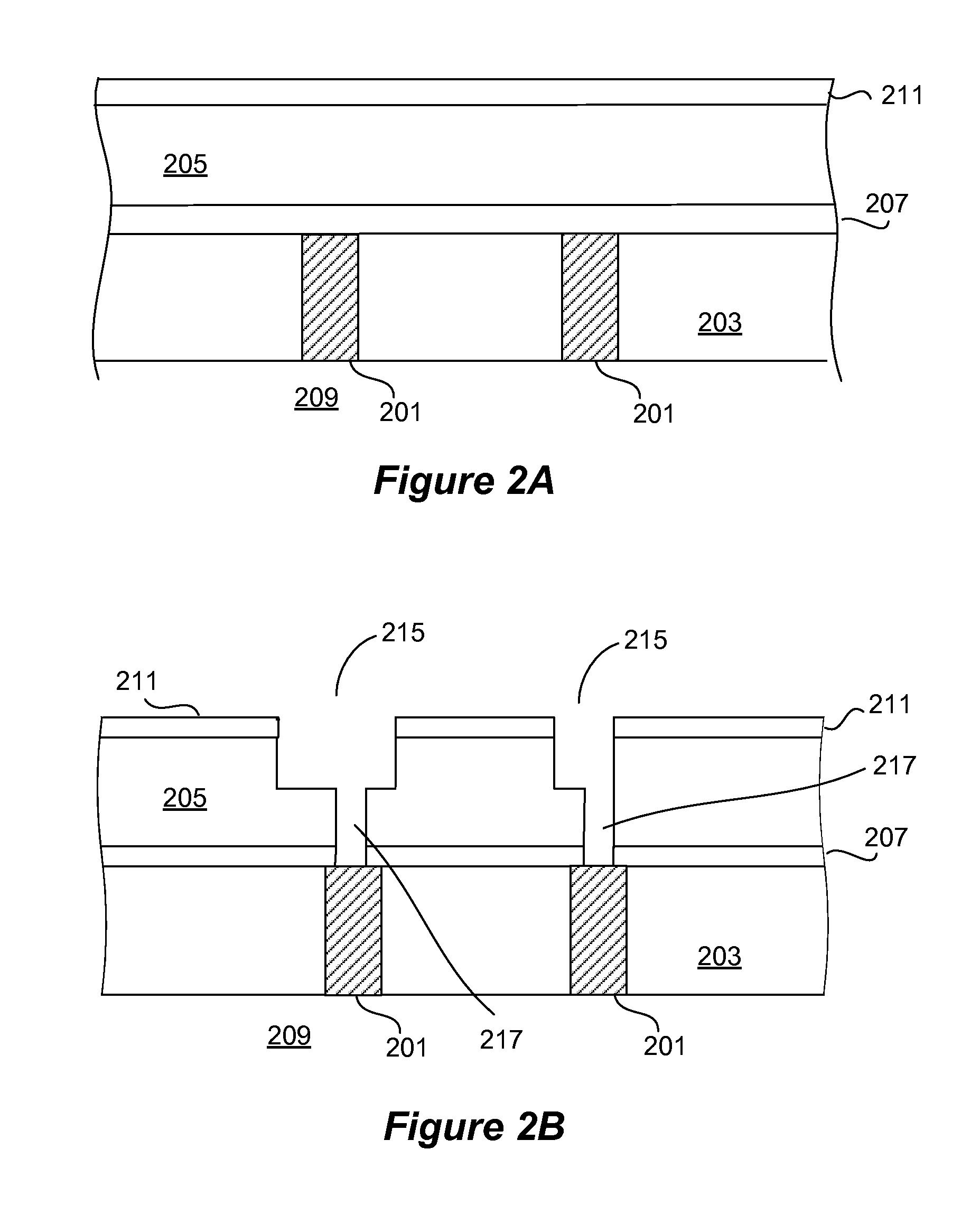UV treatment of etch stop and hard mask films for selectivity and hermeticity enhancement
a technology of selectivity and hermeticity, applied in the field of forming a dielectric, can solve the problems of limiting the improvement of device performance, reducing manufacturing costs, and undesirable moisture penetration in a dielectric layer, and achieve the effect of increasing density and increasing selectivity and hermeticity
- Summary
- Abstract
- Description
- Claims
- Application Information
AI Technical Summary
Benefits of technology
Problems solved by technology
Method used
Image
Examples
Embodiment Construction
[0020]Embodiments of the present invention are described herein in the context of a UV treatment for etch stop or hard mask films in damascene processing. Those skilled in the art will realize that the following detailed description of the present invention is illustrative only and is not intended to be in any way limiting. Other embodiments of the present invention will readily suggest themselves to such skilled persons having the benefit of this disclosure. For example, although damascene processing is used in the discussion, the UV treatment of etch stop or hard mask films is effective in all applications where such films are used (e.g., aluminum interconnects).
[0021]Reference will be made in detail to implementations of the present invention as illustrated in the accompanying drawings. The same reference indicators will be used throughout the drawings and the following detailed description to refer to the same or like parts.
[0022]The term “semiconductor device” as used herein re...
PUM
 Login to View More
Login to View More Abstract
Description
Claims
Application Information
 Login to View More
Login to View More - R&D
- Intellectual Property
- Life Sciences
- Materials
- Tech Scout
- Unparalleled Data Quality
- Higher Quality Content
- 60% Fewer Hallucinations
Browse by: Latest US Patents, China's latest patents, Technical Efficacy Thesaurus, Application Domain, Technology Topic, Popular Technical Reports.
© 2025 PatSnap. All rights reserved.Legal|Privacy policy|Modern Slavery Act Transparency Statement|Sitemap|About US| Contact US: help@patsnap.com



